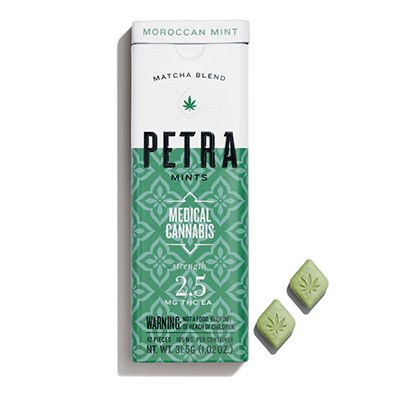Microdosing: A new way to get benefits without getting stoned

Microdosing — taking small amounts of the main active, hallucinogenic ingredient in cannabis — is surging among U.S. consumers. The practice is in 2017, driven in large part by the rush of curious but inexperienced pot users entering the marketplace. High performers — whether it’s busy child care providers or software engineers — as well as retirees and others who don’t want to smoke or smell like smoke are gravitating to the microdose trend as part of an active lifestyle as well as for medical reasons.
Simply put — Micro-dosing cannabis means taking anywhere from 1 to 5 milligrams of the main active ingredient in cannabis, THC at a time, an amount that should not cause major psychological effects. You need to be a California medical marijuana patient to buy lab-tested micro-dose products like popular 2.5 mg mints or other low-dose edibles like hard candy, or a mouth spray, or a low-THC cannabis e-cigarette, called a vape pen.
This way of using cannabis behavior stands in contrast to traditional methods like smoking joints, or hitting pipes or bongs, or taking regular edibles, which can range from 25 to 100 mg to 1,000 mg per serving. In Colorado, a standardized dose of THC is 10 mg, but Berkeley nurse practitioner Maria Mangini says 10 mg is much too high for a new cannabis user.
“Too much THC is where people can get into trouble,” she said. “You can give them a rule of thumb. I would say 2.5 mg of THC is probably a good amount for somebody who’s really, totally cannabis naive, maybe even less.”
People tolerate cannabis exposure differently, and they can explore that tolerance in a controlled manner through microdosing, she said.
“I really believe that the current state of cannabis medicine makes it necessary for every patient to be in an individual, controlled experiment,” Mangini said. “That kind of self-(dosing) really begins best with a micro-dose. For an inexperienced cannabis user, I generally suggest, particularly with THC, that people start with a real small amount and determine what number of milligrams is likely to make them feel the effects of THC.”
Micro-dosing also challenges assumptions about why people use cannabis. Micro-dosing is not about getting as high as possible and checking out on the couch. It’s often about leaning in to life, said Christie Strong, communications director for Kiva, a leading California edibles maker, Kiva.
“We’re trying to talk about this as a productivity tool, as a sort of life-hacking tool,” she said.
Kiva has heard from Google engineers who micro-dose all day at work, as well as busy women moms who use a tiny amount of cannabis to manage stress while maintaining focus.
The microdosing trend is happening now because of legalization, and the decreased stigma around interacting with pot. Twenty-seven percent of people who don’t use weed avoid it because it is illegal, an April poll by Marist found. When it becomes legal, they want mild, enjoyable experiences. Some move on to stronger products. But many will find a microdose to be just the right amount after dinner with wine, before dinner, with Sunday brunch, before yoga or a hike or even during the workday for symptoms of pain and inflammation, Strong said.
“Micro-dosing is all about conscious cannabis use,” she said. “You can also use it to replace some of the over-the-counter medications or some of these recreational products — the beer at lunch people are using to relax, smoke breaks, Valium. All of these are already integrated into society, and we can start to turn to cannabis for a really safe and effective alternative.”
Micro-dosing is also occurring because the legal market allows for more refined, manufactured and lab-tested products with specific doses, as opposed to raw cannabis flowers from the field.
A typical way to micro-dose is to try something like a 2.5-mg Petra mint from Kiva. Or a quarter piece of a 10-mg sublingual strip from Kin Slips. The active ingredients enter the bloodstream through the mouth, causing onset of effects within 20 minutes. — making it easy to take the right amount. This stands in contrast to traditional edibles, which can take two hours to kick in. While users wait, they often get impatient and eat too much, leading to uncomfortable effects.
David Goldman, chair of the marijuana interest group, the San Francisco Brownie Mary Democratic Club, brings 5-mg mints everywhere in the world he travels because they are so innocuous and safe, he says.
“Hell, I can chomp on those at a police station, they’re so discreet,” he said. “I really want to recommend patients consider carrying sugar-free cannabis mints. They work faster than edibles, especially under the tongue. You can’t overdo it. You can calibrate your dose and learn if you’re a 20 mg person or a 10 mg person.”
As legalization progresses, micro-dosing might become the new norm., much the way the ultra-light beers of today augment hard liquor, shots and cocktails inspired by alcohol prohibition. No one calls Coors Light “micro-dosing alcohol”; it’s just “having a beer.” Similarly, as more mainstream users redefine cannabis culture, ultra-low-dose experiences may take over the market and relegate high-THC products to the back of the store.
“The hardest thing for people to understand right now is the range of tolerances in cannabis,” Strong said. “No one can tell you your dose.
“I think people are going to be using this in droves in the future — it’s going to become like vitamin C,” Strong said.
